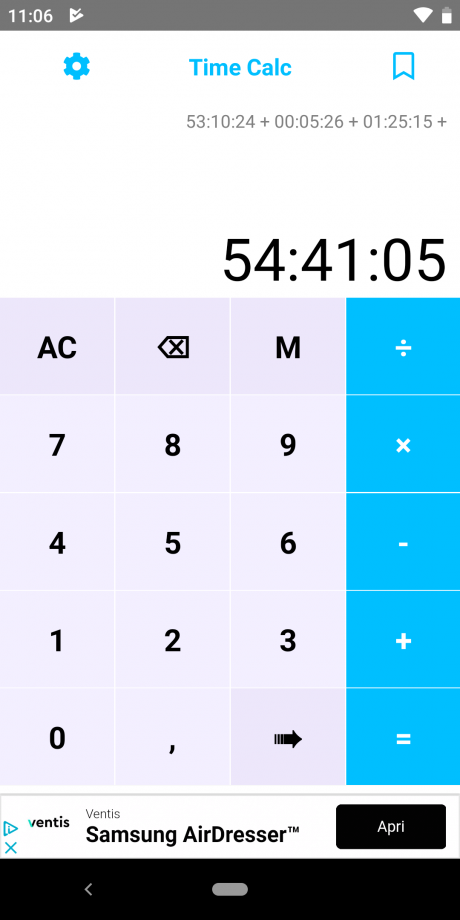
Understanding calculation methods in Excel This can cause problems when the calculation is one of a sequence of tasks and the user loses track. User errors and annoyance levels start to increase, especially for repetitive tasks, and it becomes difficult to maintain a train of thought.įor calculation times greater than 10 seconds, users become impatient and usually switch to other tasks while they wait.
#Time to time calc manual
They can use automatic calculation even when they enter data.īetween a tenth of a second and one second, users can successfully keep a train of thought going, although they will notice the response time delay.Īs calculation time increases (usually between 1 and 10 seconds), users must switch to manual calculation when they enter data. Manual calculation - Formulas are recalculated only when you request it (for example, by pressing F9).įor calculation times of less than about a tenth of a second, users feel that the system is responding instantly. User productivity and the ability to focus on a task deteriorates as response time lengthens.Įxcel has two main calculation modes that let you control when calculation occurs:Īutomatic calculation - Formulas are automatically recalculated when you make a change. Poor calculation speed affects productivity and increases user error. By identifying, measuring, and then improving the calculation obstructions in your worksheets, you can speed up calculation. You can modify most slow-calculating worksheets to calculate tens, hundreds, or even thousands of times faster.

However, the most important factor that influences Excel calculation speed is still the way your worksheet is designed and built. Multithreaded calculation can substantially reduce worksheet calculation time. Recent Excel versions introduced several features to help you handle this capacity increase, such as the ability to use more than one processor at a time for calculations and common data set operations like refresh, sorting, and opening workbooks. Slow calculation and data manipulation tasks such as sorting and filtering make it more difficult for users to concentrate on the task at hand, and lack of concentration increases errors. With the introduction of the "Big Grid" in Excel 2007, performance really matters.

In earlier versions of Excel, many people created slow-calculating worksheets, and larger worksheets usually calculate more slowly than smaller ones. A single worksheet in Excel can now contain over 1,000 times as many cells as earlier versions. The "Big Grid" of 1 million rows and 16,000 columns in Office Excel 2016, together with many other limit increases, greatly increases the size of worksheets that you can build compared to earlier versions of Excel. So our calculator uses Method 2 to work out the calculations involving months as it can be used more consistently! Other Useful Pages.Applies to: Excel | Excel 2013 | Excel 2016 | VBA


#Time to time calc how to
How to work out the time interval between January 31st and March 10th (in the same year).


 0 kommentar(er)
0 kommentar(er)
